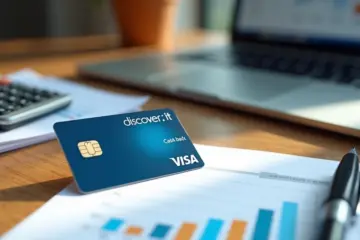7 Hidden Fees to Watch for Before Getting a New Credit Card
Sometimes, that shiny new credit card comes with more baggage than you’d expect. Offers of points, cashback, and no annual fees can distract from less obvious costs. I’ve seen friends caught off guard—myself too, honestly—by fees tucked away in the small print.
Advertisement
If you want to avoid a surprise on your next statement, here’s what to really keep your eyes on:
Advertisement
Annual fees aren’t just for the fancy cards
Sure, some premium cards are upfront about their yearly price. But even basic cards can hide annual fees behind an attractive intro period, or hike up the costs after year one. It’s worth checking your card’s full fee schedule upfront. Sometimes a card that touts no annual fee and solid rewards truly means it—look for that clarity.
Balance transfer fees can sneak up fast
You spot “0% APR on balance transfers” in big letters, but transfer your balance and suddenly lose three or five percent of that balance to a fee. If you move $2,000, that’s $60–$100 gone right away! Deals like this aren’t always what they seem—they’re only a true bargain if you do the math.
Anúncios
Cash advance fees – a temptation best avoided
It might seem practical to pull cash from your credit line when you’re short. But this often triggers both a fee—usually a flat amount or a percentage—and immediate, higher interest rates. If you’re thinking about using a cash advance, there are usually smarter ways to access funds, or review your debt and improve your financial health first.
Foreign transaction fees: travel’s hidden cost
Planning to use your card internationally or for online buys in another currency? Watch out for foreign transaction fees. These often range from 1%–3% per purchase and can add up quickly without you even noticing on vacation.
Late payment fees—easy to trigger, hard to shake
This might sound familiar: lost mail, a busy week, forgetfulness, and then a $40 fee added to your bill. Late payment fees are common, and some issuers stack on interest or even increase your APR for a single slip-up. Setting reminders is good, but I’d say, an automatic payment setup is even better.
Over-the-limit fees make a comeback
A while back, these fees faded away, but now some cards have brought them back if you opt in for over-limit transactions. Go a dollar over and you might face a $25 or $35 charge. It happens—I’ve had it happen once, totally by accident.
Returned payment fees – watch your bank balance
If your payment bounces, you could be hit with a returned payment fee. This is one of those charges that feels extra frustrating, especially when you were just a day or two off when your paycheck landed. Double-check your account or consider cards with user-friendly policies. I appreciate how some providers today communicate before adding these kinds of fees—others, not so much.
It pays to pay attention
If you want more transparency, find cards that lay it all out and actually reward you without hidden pitfalls. Cards like Discover it Secured and US Bank Cash Secured Visa spell out fees and benefits clearly—much more than other providers I’ve seen. You owe it to yourself and your wallet to learn about interest rates as well. For a crash course in how they’re calculated (and why small differences matter), check out this interest rate breakdown.
The fine print holds more than you think.
If you check those “hidden” fees before you sign up, you’ll have fewer surprises—and maybe just a little more peace too.






